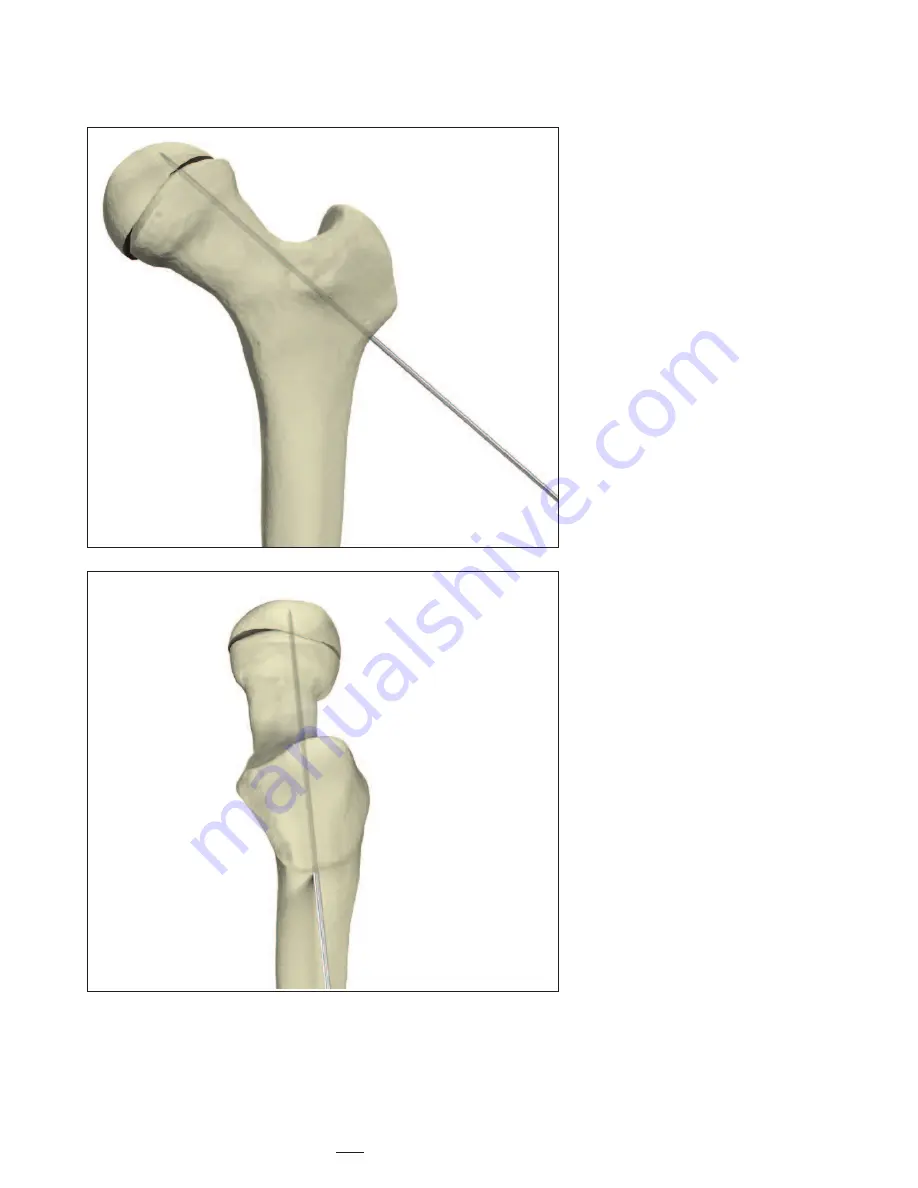
8
Step 3 – Stabilization Guide
Wire Insertion
When treating unstable (acute)
slips
a Guide Wire may be used.
Using biplanar floroscopy, it is inserted
percutaneously in the trochanteric
region into the femoral neck and
head for intraoperative stabilization.
(Fig. 5).
Fig. 5
Operative Technique